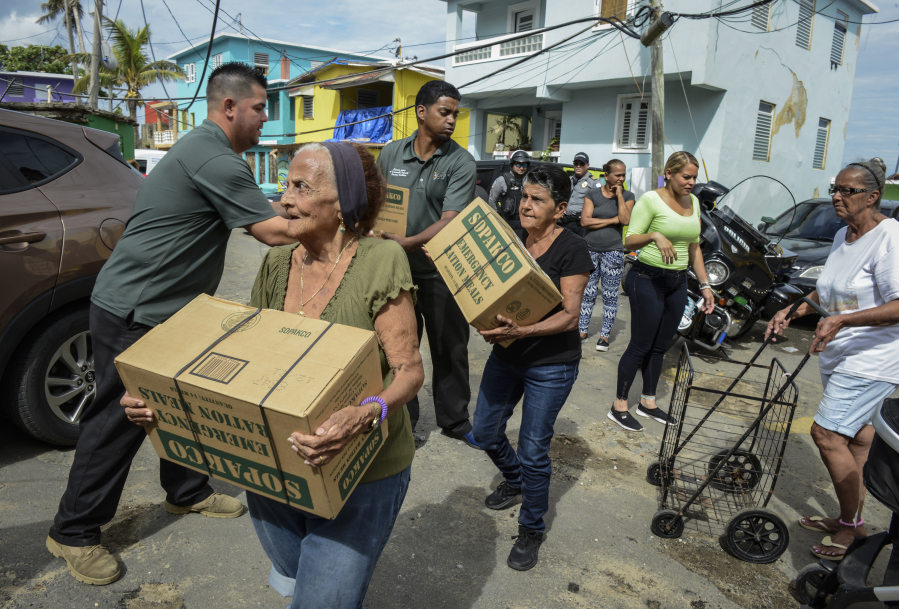ANASCO, Puerto Rico–The lights remain off in bustling cities and in small rural villages. Gas generators, the only alternative to the downed power lines that seem to be everywhere, continuously hum outside hospitals and bodegas. When night falls, it’s the glow of car lights, not streetlights, that helps break through the darkness.
Two months after Hurricane Maria tore through Puerto Rico, much of the U.S. territory still lacks electricity. Even in areas with power, such as the capital city of San Juan, residents must deal with daily blackouts.
A lack of reliable electricity coupled with widespread destruction of roads and bridges have led hundreds of thousands to flee Puerto Rico for the mainland U.S., and some economists predict decades of stagnation for an island that already was struggling financially.
In recent days, Puerto Rico Gov. Ricardo Rossello announced that the island, through the work of Puerto Rico’s Electric Power Authority, had restored power to 50 percent of the commonwealth.
Rossello has said the island will reach 80 percent generation by the end of November and 95 percent by mid-December — goals that some here have called unrealistic. In contrast, the U.S. Army Corps of Engineers estimates that 75 percent of the island will regain power by the end of January.
Rossello’s bold proclamations came before the resignation Friday of the power agency’s director, Ricardo Ramos, in a flurry of controversy over a $300 million contract awarded to Whitefish Energy Holdings to rebuild the island’s power grid. Federal authorities have been investigating the contract awarded to the small company, which is headquartered in Interior Secretary Ryan Zinke’s Montana hometown. The deal, signed shortly before Maria hit, was canceled last month as it faced scrutiny.
Rossello said Ramos had become a “distraction” as the commonwealth works to rebuild an electrical grid that was almost eliminated by the storm.
Floodwaters persist
On Saturday, Yaniel Alexis Perez walked down a narrow street in Anasco, a city of about 27,000 people with views that overlook the Caribbean Sea. He wore a special necklace — a black cellphone charger he carries with him everywhere so he can power up his phone when he finds electricity.
Perez’s house is without power, and still flooded after the unrelenting rains that have pounded the island. The floodwaters have made it dangerous for him to use a generator.
For several weeks, Perez has powered up thanks to the generosity of friends with generators. He also spends evenings at the home of his neighbor, Ricardo Prosper.
Prosper considers himself a creative type. He managed to wire the 12-volt light bulbs in his home to a series of car batteries.
“Even if there is no electricity, there’s light here,” Prosper said, showing his living room.
Officials estimate that several hundred people — mostly young adults — are leaving Puerto Rico each day for the mainland.
The departures were taking place even before Maria, a Category 4 storm, hit the island on Sept. 20.
For years, the commonwealth has struggled with debt. In May, Rossello said the Puerto Rican government, embroiled in a more than $70 million debt crisis, would go to federal court in hopes of receiving protection from creditors.
To date Congress has approved $5 billion in aid for Puerto Rico since the hurricane. Rossello has called on the federal government to give Puerto Rico nearly $94 billion in recovery aid.
While in Washington this month for meetings with members of Congress, Rossello outlined how the money would be spent: about $46 billion from the Community Development Block Grant program to restore housing; $30 billion from the Federal Emergency Management Agency for infrastructure; and $17 billion in other grant programs for long-term recovery.



